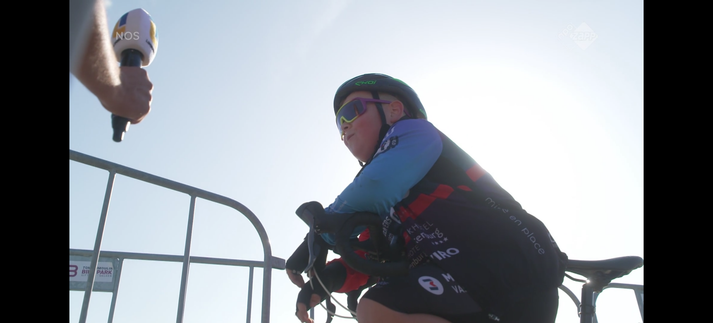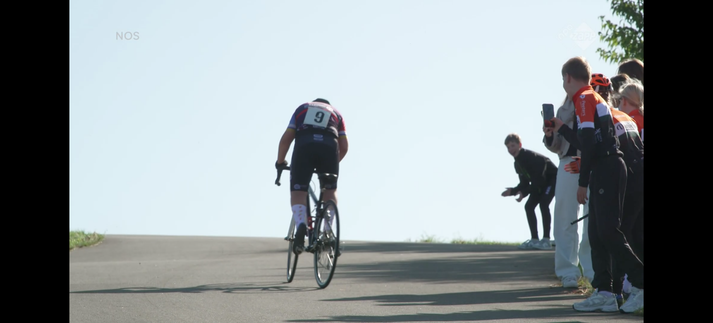2025-09-22 12:59:24
Het wordt vooral een verliezingscampagne. Winst voor uiterst rechts is tenslotte ook een verlies. Voor het land.
2025-09-21 09:11:02
Vreedzaam demonstreren kun je leren. Bezorgde lezers tijdens de Lezersmars: ‘Niemand mag bepalen wat een ander mag lezen’ https://www.nrc.nl/nieuws/2025/09/20/bezorgde-lezers-tijdens-de-lezersmars-niemand-ma…
2025-07-20 12:03:10
2025-09-18 16:07:33
Eco-Movement, which holds a quasi-monopoly on EV charging point data in Europe, has been acquired by Dow Jones.
https://www.dowjones.com/press-room/dow-jones-acquires-eco-movement/
2025-08-19 09:40:50
Shapley Values: Paired-Sampling Approximations
Michael Mayer, Mario V. W\"uthrich
https://arxiv.org/abs/2508.12947 https://arxiv.org/pdf/2508.12947
2025-09-14 17:11:48
Waarom ik jeugdjournaal kijk als dat zo uitkomt.
Hayden
En de zeehond uit Utrecht natuurlijk.
(Die lijkt weer vertrokken te zijn)
#jeugdjournaal #Jayden #Zeehond
2025-09-07 16:14:59
"""
Customarily, the honour of having liberated hysteria from the ancient myths about a displacement of the uterus goes to Le Pois and Willis. Jean Liebaud, translating or rather adapting Marinello’s work for the seventeenth century, still accepted (with a small number of caveats) the idea of a spontaneous movement of the womb. If it moved, it was “to be more at ease; not that this came about through prudence, nor was it a conscious decision or an animal stimulus, but by a natural instinct, to safeguard health and to have the pleasure of something delectable.” The idea that it could change its place and move around the body, bringing convulsions and spasms everywhere it travelled, had been abandoned, for it was now taken to be ‘tightly held in place’ by the cervix, ligaments, vessels and the sheath of the peritoneum; yet in some senses it could change its location. “The womb therefore, even though it is tightly fixed to the parts that we have described and cannot easily change its place, still manages to roam, making strange, petulant movements around the woman’s body. These diverse movements include ascensions and descents, convulsions, wanderings and prolapses. It can wander up to the liver, spleen, diaphragm, stomach, chest, heart, lung, throat and head.” Physicians of the classical age are more or less unanimous in refusing this explanation.
[…] Yet these analyses were not sufficient to break the theme of an essential link between hysteria and the womb. But the link is now conceived in different terms. It is no longer considered to be the trajectory of a real displacement through the body, but rather a sort of mute propagation through the paths of the organism and its functional proximities. It cannot be said that the seat of the malady has become the brain, nor that thanks to Willis a psychological explanation of hysteria was now possible. But the brain does take on the role of a relay that distributes a malady whose origins are visceral, and the womb brings it on just as the other viscera do. Up until the end of the eighteenth century, and Pinel, the uterus and the womb are still present in the pathology of hysteria, but thanks to a privileged diffusion by the humours and nerves, not because of any particular prestige of their nature.
"""
(Michel Foucault, History of Madness)
2025-09-14 09:11:50
Das #Rezept des Tages:
🥔🐟 Lachs-Kartoffel-Gratin ist sicherlich keine alltägliche Speise. In diesem Rezept erfährst Du, wie Du mit #Sahne und #Kräuterkäse ein cremiges
2025-07-31 17:04:13
Norge trenger flere «tullestudier», ikke færre https://www.khrono.no/norge-trenger-flere-tullestudier-ikke-faerre/986676









